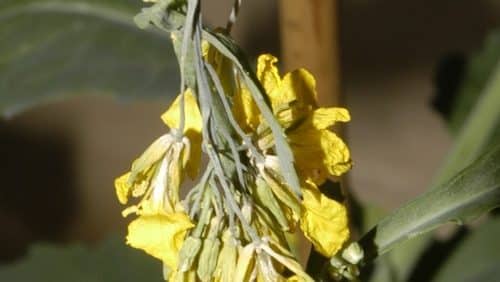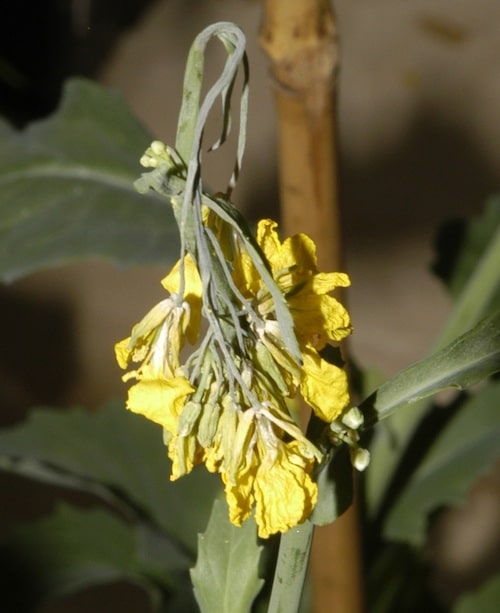Most Prairie soils have more than enough calcium to satisfy crop needs, but short-term deficiencies can occur in plants under stress from excess moisture.
Saturated soils due to long periods of excess rain make it difficult for canola plants to take up nutrients. In some cases, calcium deficiencies will show up more vividly than other deficiencies, likely due to crop growth stage and the timing or duration of the flooding.
The best course of action is to wait until the soil dries up and the crop starts growing again. Symptoms can correct themselves. But here’s an interesting twist: If the soil dries up and then gets saturated again right away, canola plants often show wilting and death of the main raceme quickly when the stress returned. These plants may branch out and attempt to recover if the stress subsides.
Calcium deficiencies look like:
- “Ribbon stem.” The stem goes flat and flops over, typically just below the growing point (bud or flower cluster) at the top of stems and branches. These collapsed stems then turn brown and rot or dry up. (See the photo below.)
- Accelerated maturity. The plant will set seed quickly, sometimes locking in low yield.
- Yellowing, browning and necrosis (tissue dies) in patches in the middle of leaves. This is actually a unique symptom of calcium deficiency. (See the photo below.)
- Dark spots on pods which turn brown and necrotic.


